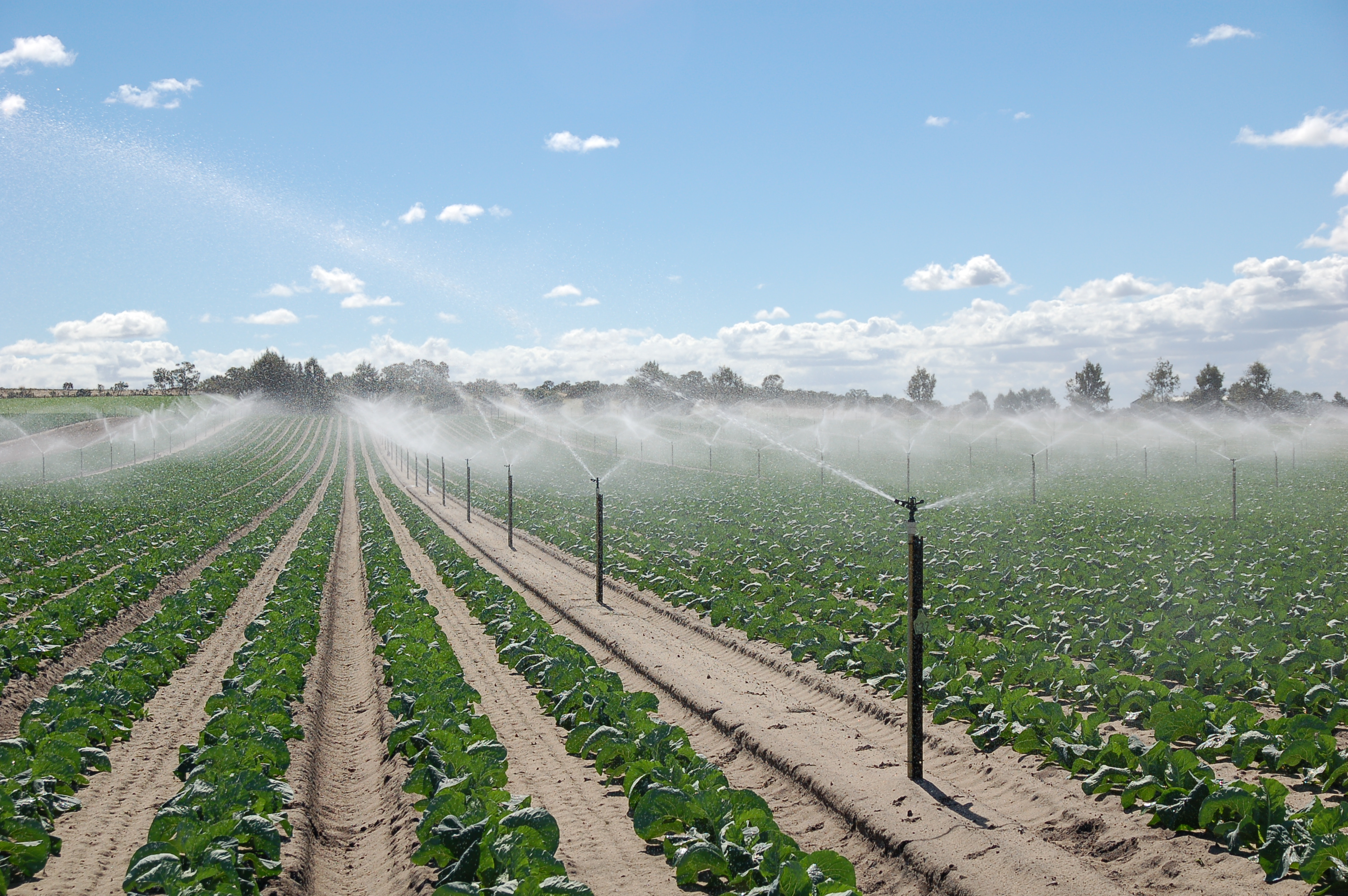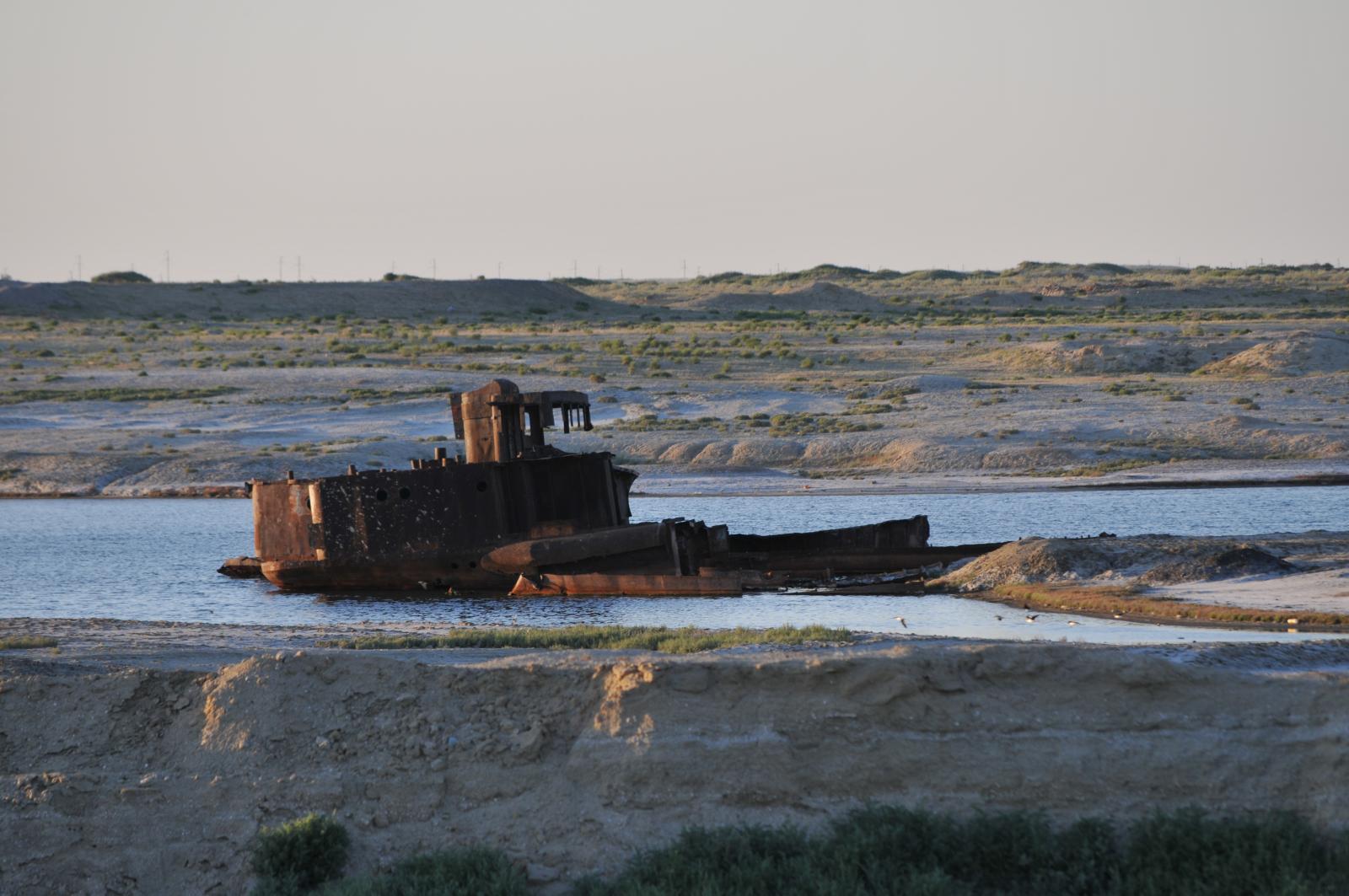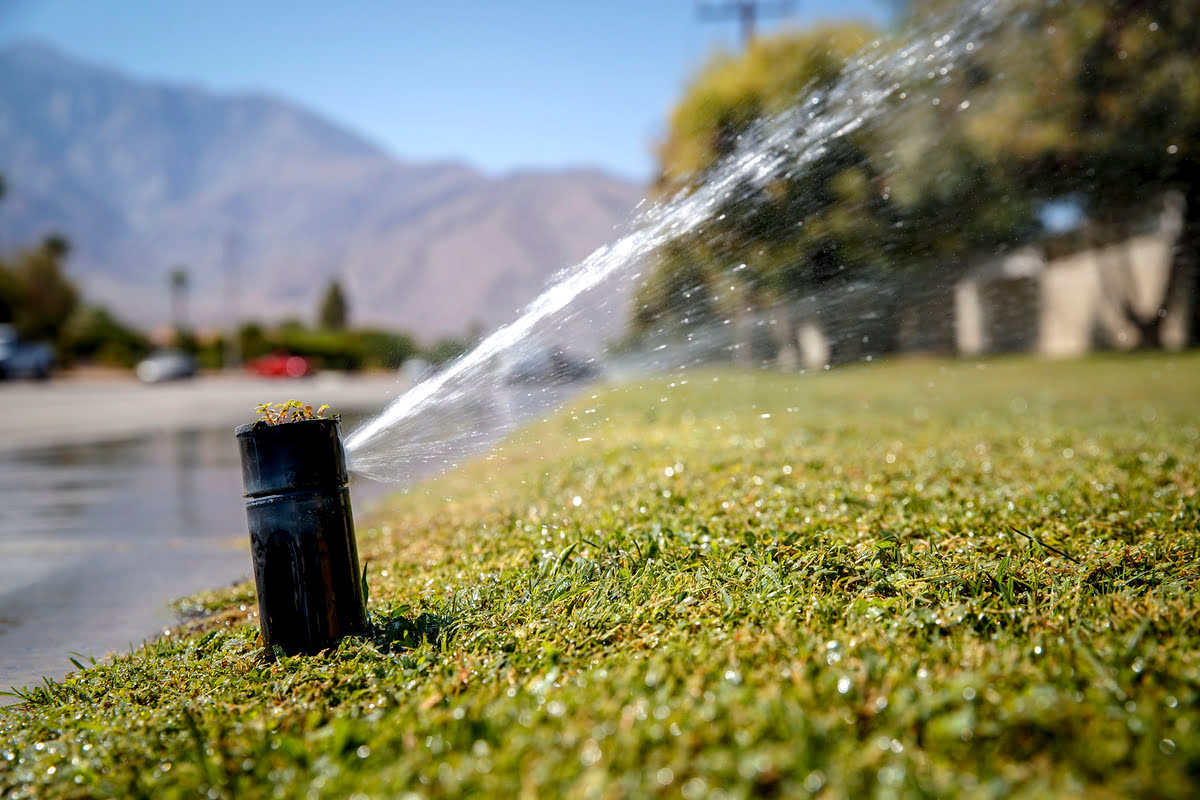Home>Gardening Basics>Understanding Soil>Why Does Water From Irrigation Increase Salt Concentration In Soil Which Can Damage Crops


Understanding Soil
Why Does Water From Irrigation Increase Salt Concentration In Soil Which Can Damage Crops
Modified: January 22, 2024
Understanding soil is crucial as water from irrigation can raise salt concentration in soil, potentially harming crops. Learn more about managing salt levels in soil.
(Many of the links in this article redirect to a specific reviewed product. Your purchase of these products through affiliate links helps to generate commission for Chicagolandgardening.com, at no extra cost. Learn more)
Table of Contents
Introduction
When it comes to cultivation, soil health plays a crucial role in determining the success of crops. However, various factors can affect the quality of soil, and one such factor is the accumulation of salt. Salt accumulation in soil can have detrimental effects on crop growth and productivity, making it crucial for farmers and gardeners to understand its impact and how to manage it.
Irrigation, which is essential for providing water to plants, can inadvertently contribute to the increase in salt concentration in soil. This occurs when water carries dissolved salts from various sources, such as underground water tables or sources with high salt content. When this water is applied to the soil, it can lead to the accumulation of salts over time.
This article aims to provide a comprehensive understanding of the impact of irrigation on soil salinity, the factors that contribute to salt accumulation, the effects of increased salt concentration on crops, and strategies to manage salt accumulation in soil. By gaining insights into these aspects, farmers and gardeners can make informed decisions to ensure optimal soil health and crop productivity.
Understanding the Impact of Irrigation on Soil Salinity
Irrigation is crucial for supplying water to plants, especially in areas with limited rainfall. However, while irrigation is essential for plant growth, it can have unintended consequences on the soil. One of the effects is the increase in salt concentration, a phenomenon known as soil salinity.
When water is applied to the soil during irrigation, it carries dissolved salts from various sources like underground water tables, rivers, or lakes. These salts, primarily composed of ions such as sodium, potassium, calcium, and magnesium, can accumulate in the soil over time.
The buildup of salts in the soil can be attributed to two main processes: evaporation and insufficient drainage. As water evaporates from the soil surface, it leaves behind the salts, which gradually accumulate over time. Additionally, if the soil has poor drainage, water may accumulate and lead to waterlogging, causing salts to accumulate as well.
The impact of irrigation on soil salinity depends on various factors, including the quality of the irrigation water, frequency of irrigation, and the type of soil. Water with high salt content, such as saline groundwater, can significantly contribute to salt accumulation. Similarly, frequent irrigation without adequate time for drainage can exacerbate the problem, as the salts do not have a chance to leach out.
Moreover, the type of soil plays a crucial role in how it reacts to increased salt concentration. Clay soils, for example, have smaller particles with a higher surface area, making them prone to retaining more salt. On the other hand, sandy soils have larger particles and better drainage, allowing salts to leach more easily.
Understanding the impact of irrigation on soil salinity is essential for farmers and gardeners to prevent and manage the problem effectively. By being aware of the factors that contribute to salt accumulation, they can implement strategies to minimize its effects on plant health and productivity.
Factors Affecting Salt Accumulation in Soil
Several factors contribute to the accumulation of salts in soil, ranging from natural processes to human activities. Understanding these factors is crucial for managing soil salinity effectively. Here are some key factors that influence salt accumulation:
- Source of Irrigation Water: The quality of the irrigation water is a primary determinant of salt accumulation. Water from saline sources, such as groundwater with high salt content or recycled wastewater, can introduce significant amounts of salts into the soil. It is important to monitor the salt content of the water used for irrigation to prevent excessive accumulation in the soil.
- Irrigation Frequency and Amount: The frequency and quantity of irrigation also play a role in salt accumulation. Frequent irrigation without sufficient time for the soil to drain can lead to salt buildup. Inadequate irrigation practices, such as applying excessive amounts of water, can also contribute to the problem, as excess water evaporates, leaving salts behind.
- Soil Type and Texture: The type and texture of the soil influence its ability to retain or leach out salts. Clay soils, with their smaller particles and higher surface area, have a higher tendency to retain salts. In contrast, sandy soils, with larger particles and better drainage, allow salts to leach more easily. Understanding the soil type is essential for developing appropriate management strategies.
- Soil Drainage: Insufficient drainage is a key factor contributing to salt accumulation. When soil lacks proper drainage, waterlogged conditions can occur, preventing salts from leaching out. Improving soil drainage through methods like incorporating organic matter or installing drainage systems can help manage salt accumulation.
- Fertilizer and Manure Use: The type and amount of fertilizer and manure applied to the soil can impact salt levels. Fertilizers and manure contain varying amounts of salts, and excessive application can contribute to salt buildup. It is essential to follow recommended application rates and consider the salt content of fertilizers and manure being used.
- Climate and Evaporation: Climate factors, such as high temperatures and low humidity, can accelerate evaporation from the soil surface. As water evaporates, it leaves behind salts, leading to their accumulation. Areas with arid or semi-arid climates are more susceptible to soil salinity issues.
These are just a few of the many factors that can influence salt accumulation in the soil. By understanding these factors and their interactions, farmers and gardeners can implement appropriate management practices to mitigate salt-related problems and maintain optimal soil health for plant growth.
Effects of Increased Salt Concentration on Crops
Increased salt concentration in soil can have detrimental effects on crop growth and productivity. The effects vary depending on the level of salt accumulation, the specific crop species, and the stage of crop development. Here are some common effects of high salt concentration on crops:
- Reduced Water Uptake: High salt levels in the soil create an osmotic imbalance, making it more difficult for plants to take up water. This can lead to water stress and reduced growth of roots and shoots.
- Ion Imbalance: Excessive salt levels alter the balance of essential nutrients in plants. Sodium, in particular, can replace potassium, calcium, and magnesium ions, disrupting various physiological processes. This can negatively affect plant growth, nutrient uptake, and overall plant health.
- Stunted Growth and Reduced Yield: High salt concentration hampers plant growth, resulting in stunted plants with reduced leaf expansion and shorter root systems. These growth impairments ultimately lead to decreased yield and quality of harvestable crops.
- Leaf Burning and Chlorosis: Salt accumulation in the leaves can cause burning or scorching of leaf edges, known as leaf burn. Chlorosis, or yellowing of leaves, may also occur due to disrupted chlorophyll production and impaired photosynthesis.
- Increased Susceptibility to Diseases: Plants under salt stress are more vulnerable to various diseases and pests. The weakened state of the plants makes them less capable of withstanding pathogen attacks, reducing crop resilience and increasing the risk of yield losses.
- Poor Seed Germination: High salt levels in the soil can inhibit seed germination or delay the germination process. This can lead to poor establishment and reduced crop stand, directly affecting the overall crop productivity.
- Altered Nutritional Quality: Increased salt concentration can affect the nutrient composition of crops, compromising their nutritional value. This can have implications for human and animal consumption.
In addition to these effects, it is worth noting that different crop species have varying tolerance levels to salt stress. Some crops, known as halophytes, are more adapted to saline environments and can tolerate higher salt concentrations. However, most conventional crops are sensitive to salt stress, making it crucial to manage soil salinity to ensure optimal crop growth and yield.
Understanding the effects of increased salt concentration on crops highlights the importance of implementing appropriate management practices to mitigate salt-related problems and sustain agricultural productivity.
Symptoms of Salt Damage in Plants
When plants are exposed to high levels of salt in the soil, they exhibit specific symptoms that indicate salt damage. Monitoring for these symptoms can help farmers and gardeners identify and address salt-related problems promptly. Here are some common symptoms of salt damage in plants:
- Leaf Burn and Scorching: One of the most visible signs of salt damage is the browning or scorching of leaf edges. As salt accumulates in the leaves, it disrupts water uptake and transpiration, leading to cellular damage and leaf burn.
- Leaf Chlorosis: High salt concentration can interfere with the plant’s ability to take up essential nutrients, including iron and manganese. This nutrient imbalance causes yellowing of the leaves, known as chlorosis, as chlorophyll production is impaired.
- Stunted Growth: Excessive salt levels in the soil lead to osmotic stress, making it difficult for plants to take up water. This water stress affects root growth, resulting in stunted plants with reduced shoot growth and overall decreased plant size.
- Wilting: Salt accumulation can cause water stress in plants, resulting in wilting even when the soil is moist. This is due to the osmotic imbalance caused by the excessive salt concentration, which hampers water uptake by the roots.
- Reduced Yield: Plants suffering from salt damage often experience reduced yield and poor crop quality. The impairment of growth and development, coupled with nutrient imbalances, leads to decreased productivity and harvestable yield.
- Increased Susceptibility to Pests and Diseases: Salt-stressed plants become weaker and more susceptible to pest infestations and diseases. The overall health and vigor of the plants are compromised, making them more vulnerable to attacks from pathogens and pests.
- Poor Seed Germination: High salt levels in the soil can inhibit or delay seed germination. This can result in poor or uneven crop emergence, ultimately reducing the stand and crop uniformity.
- Root Damage: The presence of excessive salt in the soil can cause damage to the root system. This can manifest as reduced root growth and development, impaired nutrient uptake, and increased vulnerability to root diseases.
It is important to note that the severity and specific symptoms may vary depending on the plant species, salt concentration, and duration of exposure. Identifying and addressing salt damage symptoms early on can help mitigate further damage and improve plant health and productivity.
Regular observation and proper management practices are essential for maintaining optimal soil health and preventing or minimizing salt damage in plants.
Strategies to Manage Salt Accumulation in Soil
Managing salt accumulation in the soil is crucial for maintaining soil health and ensuring optimal crop growth and productivity. Here are some effective strategies that farmers and gardeners can employ to mitigate the negative effects of salinity:
- Improve Soil Drainage: Enhancing soil drainage is essential for preventing waterlogging and allowing salts to leach out. This can be achieved by incorporating organic matter, such as compost or manure, to improve soil structure and promote better water movement.
- Implement Proper Irrigation Practices: Adjusting irrigation practices can help minimize salt accumulation. Practices like drip irrigation or using sprinklers with low drift can deliver water directly to the roots and reduce water evaporation, minimizing salt buildup at the soil surface.
- Use Quality Irrigation Water: Monitoring the quality of irrigation water is crucial. If the water source has a high salt content, it may contribute to salt accumulation. Consider using alternative water sources or implementing water treatment methods to reduce salt levels.
- Practice Crop Rotation: Crop rotation can help break the cycle of salt buildup in the soil. Planting salt-tolerant crops in saline-prone areas can help mitigate salt damage and improve soil health. Alternating deep-rooted crops with shallow-rooted ones can also help extract salts from deeper soil layers.
- Manage Fertilizer and Nutrient Application: Properly managing fertilizer and nutrient applications is crucial to prevent excessive salt buildup. Follow recommended application rates and avoid over-applying fertilizers high in salt content. Conduct soil tests regularly to ensure balanced nutrient levels.
- Apply Gypsum: Gypsum, a calcium sulfate compound, can help improve soil structure and reduce the impact of high sodium levels. Applying gypsum to the soil can replace sodium ions with calcium ions, improving the soil’s ability to retain water and reducing the risk of sodium-induced soil degradation.
- Monitor and Manage Salinity Levels: Regularly monitor the salinity levels of the soil to track any changes. Conducting soil tests and using tools like electrical conductivity (EC) meters can provide valuable data for adjusting management practices and implementing necessary interventions.
- Plant Salt-Tolerant Varieties: Choosing crop varieties that are more tolerant to higher salt levels can help combat salt stress. Selecting salt-tolerant varieties can improve the chances of successful crop production in saline-prone areas.
It is important to note that implementing these strategies may require a combination of different approaches, as the success of each method may vary depending on the specific conditions and severity of salt accumulation. Consulting with agricultural experts or extension services can provide valuable guidance tailored to specific farming systems and local conditions.
By adopting these strategies, farmers and gardeners can effectively manage salt accumulation in the soil, promote soil health, and ensure sustainable crop production.
Conclusion
Soil salinity resulting from increased salt accumulation can have detrimental effects on crop growth and productivity. Understanding the impact of irrigation on soil salinity, the factors contributing to salt accumulation, and the effects on crops is essential for effective management. By implementing strategies to mitigate salt accumulation, farmers and gardeners can promote optimal soil health and ensure sustainable crop production.
Proper irrigation practices, including using quality irrigation water and adjusting irrigation frequency and amounts, can help minimize salt buildup. Improving soil drainage and incorporating organic matter can enhance soil structure and promote better water movement, allowing salts to leach out. Implementing crop rotation, planting salt-tolerant varieties, and managing fertilizer and nutrient applications are also effective approaches to manage salt accumulation in the soil.
Recognizing symptoms of salt damage in plants and monitoring salinity levels can help identify and address salt-related problems promptly. Early intervention and proper management practices can mitigate further damage and improve plant health and productivity.
As every farming system and soil type is unique, it is crucial to consult with agricultural experts or extension services to develop site-specific management plans. Regular soil testing and monitoring can provide valuable insights into the soil’s salinity levels, helping to refine management strategies and ensure long-term soil health.
By adopting these strategies and continuously improving our understanding of soil salinity management, farmers and gardeners can overcome the challenges posed by salt accumulation, sustain crop productivity, and contribute to the overall health and productivity of our agricultural systems.




